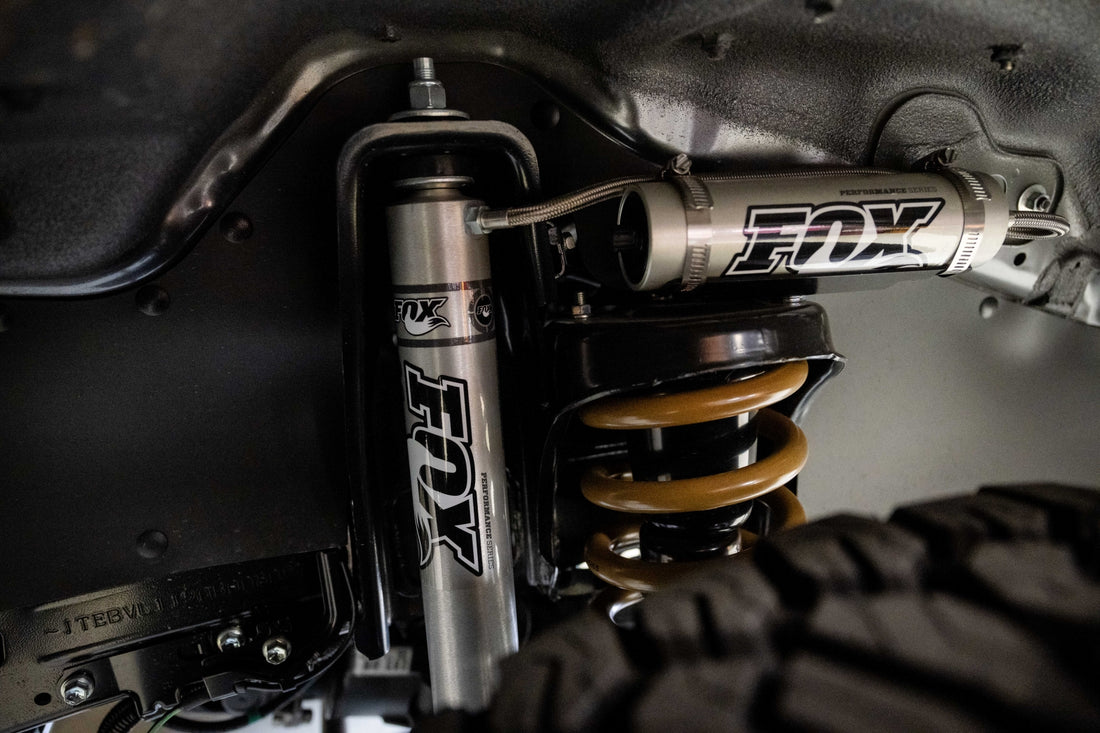
Getting your suspension right
Suspension is a key component of your vehicle, and good suspension plays a major role in the level of comfort you experience and the safety of your vehicle. Unfortunately, a lot of people don’t get it right. In this article, we are going to help you understand how to get your suspension right, regardless of what brand you choose to run.
What do you need to consider?
At its core, suspension involves a set of springs which manage a load placed on each corner of the vehicle, and which are controlled by a shock absorber designed to manage that weight as the wheels move up and down over uneven ground or bumps in the road.
The key to getting your suspension setup right is matching the suspension to the weight that you are carrying most of the time, because that will make it the most comfortable.
When you load the vehicle outside of that particular setup though, you are making compromises. I.E – if it ends up with a few hundred kilos more weight in the rear, it will handle vastly differently. The suspension will still work, but perhaps not optimally, or perhaps you will notice sagging in the rear end, or it feel floaty in the front.
The same is true if you setup the suspension for weight that is not on the vehicle. Without that weight sitting on the springs, they will be stiff and you will find the ride very harsh, perhaps even feeling the wheels lift off the ground over things like speed humps because of the lack of weight.
By setting up your suspension for the weight that the vehicle carries most of the time, you will get the best ride. It may mean there is a slight sag when you tow a trailer, but if that is a few times a year, then it won’t bother you, and unless you are talking significant changes in weight, it shouldn’t be a safety or drivability issue.
On the other hand, if you tow a trailer every day, you want your suspension to be setup for that.
Can I have my cake and eat it too?
I can guess what you are thinking. How do I setup my suspension for every day, but also have it capable of managing a heavier load here or there?
The only real solution in this case is to consider something like airbags. Some people love them, and some claim that they are responsible for bending chassis.
In our experience, when used correctly, they can help your springs manage additional load by helping to return the vehicle to standard ride height when carrying additional loads.
What suspension do I need?
Choosing suspension can be challenge. There are a lot of brands pushing remote reservoir suspension, but the key to it from our point of view is considering how you are using the vehicle.
Remote reservoir suspension really comes into its own under continued, high speed use, like corrugated roads and hard off-roading. However, there is a compromise in the fact that this kind of suspension offers a harsher ride under normal driving conditions.
For most people, who use their vehicles for work or family, with some off-roading on weekends and holidays, you probably don’t need remote reservoir suspension. In this case, the majority of people will get great results from a quality product like our Fox 2.0 suspension, which offers an excellent ride in most conditions, and performs strongly off-road too.
Bigger, heavier 4X4’s, or those doing a lot of hard off-roading may benefit from heavier duty suspension like our Fox 2.5 remote res setups.
When do I install it?
We’d recommend leaving the install of your suspension until as late in your build process as possible. That way, the vehicle is closest to what it will weigh most of the time, which is what we want to base the setup on.
The best way to manage what sort of springs you need is to go and weigh the vehicle. With each corner accurate, and an understanding of your use situation, we can get the setup right, which means a comfortable and reliable ride and performance!
If you have questions about your suspension setup, please reach out for a chat - the team is here to help!
